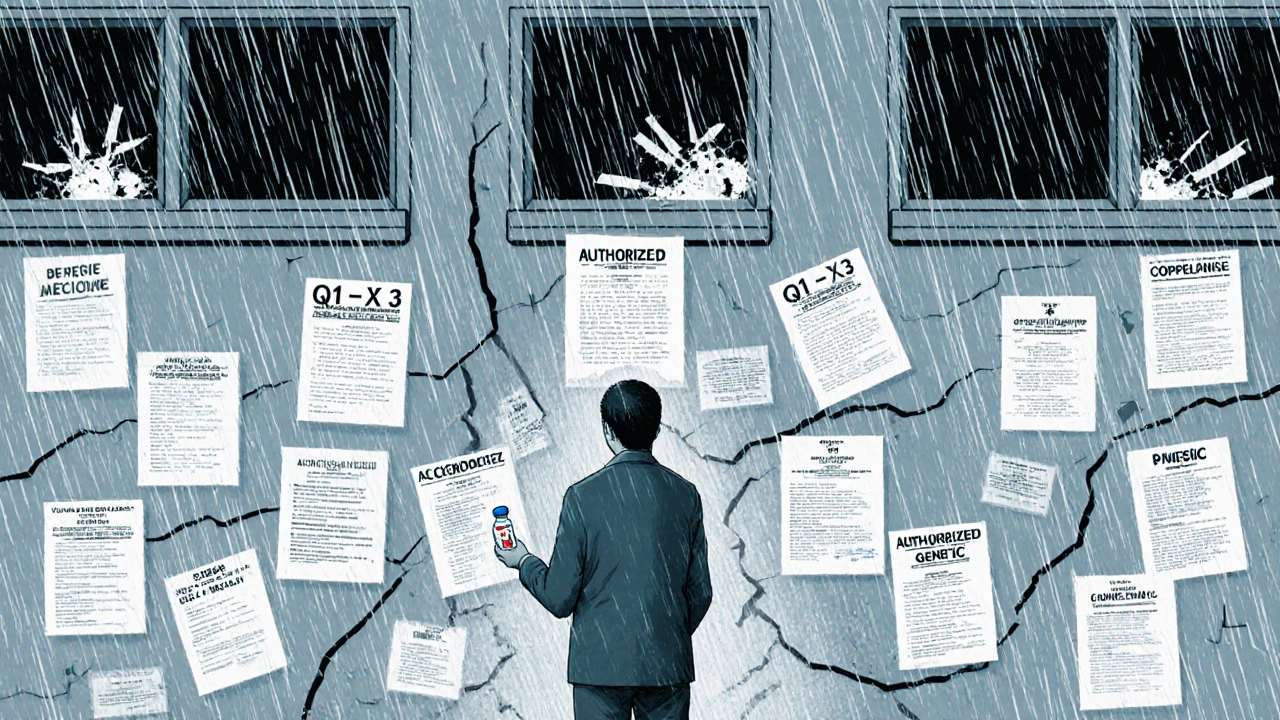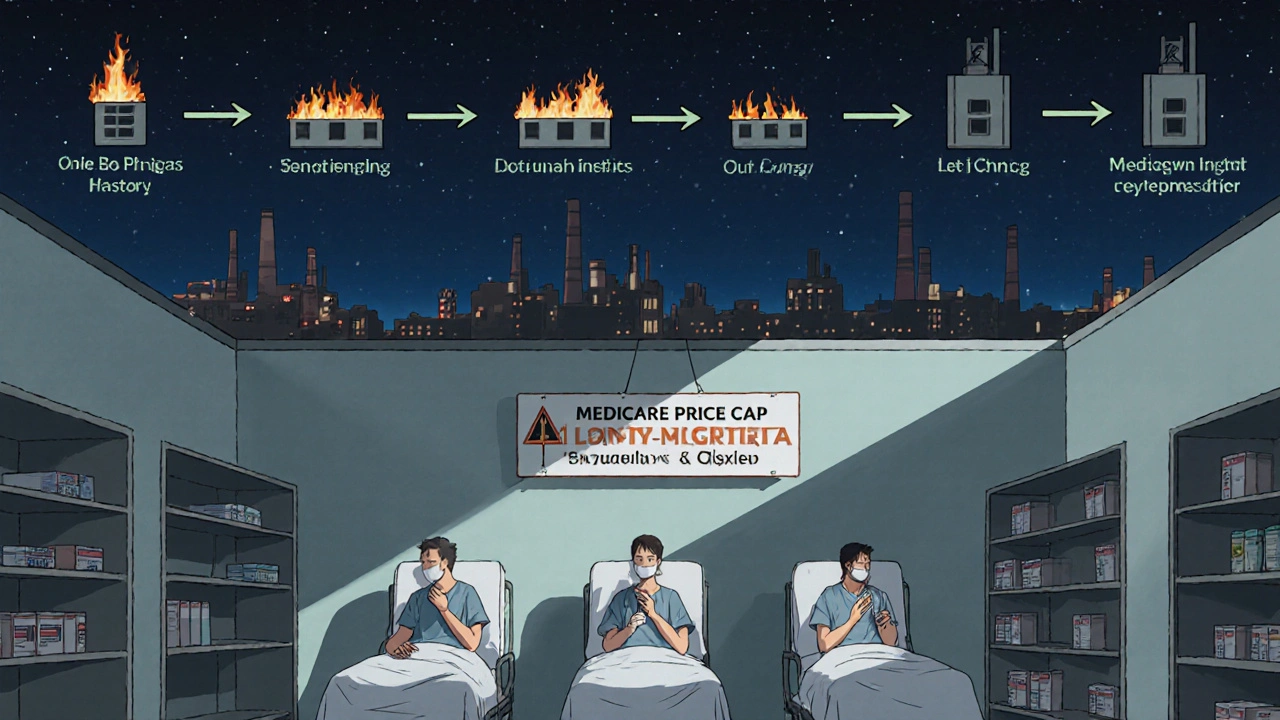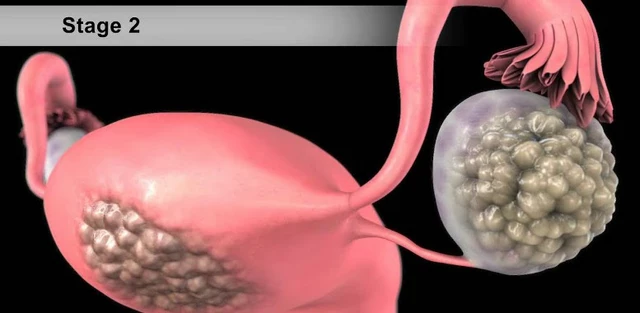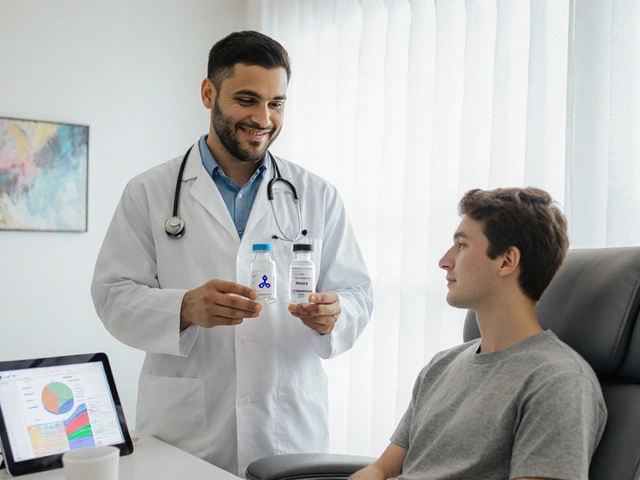When you walk into a pharmacy and see a bottle of metformin or lisinopril priced at $4, you might think it’s just the free market at work. But behind that low price is a complex, often counterintuitive battle between dozens of companies, regulators, and middlemen - all trying to control how much you pay for medicine. The idea is simple: more generic competitors should mean lower prices. But in reality, the relationship between the number of generic manufacturers and drug costs is anything but straightforward.
More Competitors Don’t Always Mean Lower Prices
It sounds logical. If five companies make the same generic version of a cholesterol drug, they’ll fight to win business by undercutting each other. And sometimes, that’s exactly what happens. When six or more generic manufacturers enter the market, prices for many drugs drop by 95% compared to the original brand. That’s the kind of savings the FDA says has saved Americans over $3 trillion since 1984.
But here’s the twist: in many cases, adding more competitors doesn’t push prices down - it stops them from falling further. In Portugal, for example, regulators set price caps on generic statins. Even with five or six generic makers in the market, prices stayed stubbornly close to those caps. Why? Because the companies stopped competing. They knew if one dropped its price, the others would follow - and everyone would lose. So they didn’t drop it at all. This is called mutual forbearance. It’s not collusion. It’s not illegal. It’s just smart business in a regulated system.
The First Generic Gets Almost Everything
In the U.S., the first company to file for generic approval gets 180 days of exclusive rights to sell. During that time, they capture about 80% of the market. That’s a huge reward - and it creates a problem. Why would a second company spend millions on testing, manufacturing, and legal battles if the first one already owns most of the market? Many don’t. That’s why, even after years, nearly 70% of generic drugs in China had only one or two competitors. The same pattern shows up in the U.S. and Europe.
That’s not because there aren’t enough companies that can make the drug. It’s because the financial incentive to enter is too low. The first mover takes the lion’s share. The rest fight over crumbs. And if the first generic is owned by the original brand company - known as an authorized generic - the game changes again. Brand companies sometimes launch their own generic to block others from entering. When they do, they often cut their own brand price by 8-12%. But when the authorized generic is made by a different company, brand prices actually go up by 22%. Why? Because the brand company feels less pressure to lower prices when a rival is selling the same thing under a different label.
Complex Drugs Are Harder to Copy
Not all drugs are created equal. A simple pill like ibuprofen is easy to copy. But a drug delivered through a special inhaler, patch, or injectable gel? That’s a different story. To get approval, a generic maker must prove it’s identical to the brand in every way - not just in active ingredients, but in how it’s absorbed, how it breaks down, even how it feels in your mouth. These are called Q1, Q2, and Q3 characteristics.
Proving that takes years and millions of dollars. Only the biggest generic companies - like Teva, Mylan, or Sandoz - can afford it. Smaller players stay out. So even if ten companies have approval on paper, only two or three are actually making and selling the drug. This is what experts call the complexity advantage. The brand doesn’t need to raise prices. The market just doesn’t have enough real competitors to force it down.

Who Really Controls the Price?
Most people think pharmacies set drug prices. They don’t. Pharmacy Benefit Managers (PBMs) do. These are the middlemen between insurers, pharmacies, and drugmakers. In 2017, PBMs handled 90% of all U.S. drug purchases. They negotiate rebates, set formularies, and decide which generics get preferred status.
That means even if a generic is cheaper, it might not be the one you get. If the PBM gets a bigger rebate from the brand, they’ll push you toward the more expensive version. And if the PBM has a deal with the first generic maker, they’ll lock out others - even if they’re cheaper. So you can have five generic options on the shelf, but your insurance only covers one. That’s not competition. That’s control.
Why Some Brand Prices Go Up After Generics Arrive
Here’s one of the strangest things in drug pricing: sometimes, when generics enter the market, the brand price goes up.
A 2023 study in China found that 3 out of 27 brand-name drugs actually increased in price after generics arrived. Why? Because the brand company believed its version was better - maybe because of better quality control, fewer side effects, or just brand trust. So instead of competing on price, they competed on perception. They raised the price and told doctors and patients: “You get what you pay for.”
And it worked. In some cases, the brand kept over 70% of the market even after generics were available for years. This isn’t rare. It’s happening in oncology drugs, diabetes meds, and psychiatric medications - especially where patients or doctors are scared to switch.
The New Threat: Medicare Price Negotiation
Starting in 2026, Medicare will start negotiating prices for 10 high-cost brand drugs each year under the Inflation Reduction Act. These are called Maximum Fair Prices (MFPs). The goal is to lower costs for seniors. But it’s creating a new problem: why would a generic company spend $10 million to enter a market if the brand is now capped at $50 a month? If the brand’s price is locked in, generics can’t undercut it by much - and without that undercutting, there’s no reason to enter.
FDA data shows that drugs with MFPs are already seeing fewer generic applications. That’s dangerous. Because when only one or two companies make a drug, supply chain problems turn into shortages. Between 2018 and 2022, drugs with three or more manufacturers had 67% fewer shortages than single-source generics. If MFPs discourage new entrants, we could see more drug shortages - especially for critical medicines like insulin or chemotherapy drugs.

Supply Chain Resilience Depends on Competition
When Hurricane Maria hit Puerto Rico in 2017, it shut down a major antibiotic manufacturing plant. That one event caused nationwide shortages of penicillin and other antibiotics. Why? Because only two companies made those drugs. If there had been five or six, the system could have absorbed the loss.
Multiple generic manufacturers aren’t just good for price - they’re good for safety. More competitors mean more factories, more supply routes, more backups. When a drug has only one maker, you’re one fire, one regulation change, or one lawsuit away from running out. That’s not just an inconvenience. It’s a public health risk.
What’s Next for Generic Competition?
The future of generic competition isn’t just about more pills. It’s about complex biologics - drugs made from living cells, like insulin or rheumatoid arthritis treatments. These aren’t pills. They’re living molecules. Copying them isn’t like copying aspirin. It takes a decade and hundreds of millions. These are called biosimilars.
And here’s the problem: while small-molecule generics can cut prices by 85%, biosimilars only drop prices by 15-30%. That’s because the cost to make them is so high. And right now, the same barriers that block simple generics - complex regulations, PBM control, authorized generics - are also blocking biosimilars.
Regulators in the U.S. and Europe are trying to harmonize approval rules. But progress is slow. Meanwhile, innovators are filing dozens of patents on minor changes - a new tablet coating, a different expiration date - just to delay generic entry. These are called “patent thickets.” They’re legal. They’re effective. And they’re keeping prices high.
What This Means for You
If you’re paying for a generic drug and the price hasn’t dropped in years, it’s not because the market isn’t working. It’s because the system was designed to protect certain players - not to maximize competition.
Here’s what you can do:
- Ask your pharmacist: “Is there another generic version of this drug?”
- Ask your doctor: “Can I switch to a different generic?”
- Check your insurance formulary: Sometimes the cheapest option isn’t the first one listed.
- If your drug has only one manufacturer and you’re worried about shortages, ask about backup options.
The truth is, generic drugs still save billions every year. But the system that was supposed to drive prices down is now being shaped by legal, financial, and technical barriers that few people understand. More competitors don’t always mean lower prices. But fewer competitors almost always mean higher risk - for your wallet and your health.
Why don’t more companies make generic drugs if they’re so profitable?
Making generics isn’t as easy as it sounds. Even simple drugs require expensive FDA approval, and complex ones can cost over $10 million to develop. Many companies can’t afford the risk - especially if the first generic captures most of the market. Plus, if the brand company launches its own authorized generic, profits shrink fast. The financial reward isn’t worth the cost for many smaller firms.
Do generic drugs work the same as brand-name drugs?
Yes. By law, generics must have the same active ingredient, strength, dosage form, and route of administration as the brand. They must also be absorbed into the body at the same rate and extent. The FDA requires this. Differences in inactive ingredients (like fillers or dyes) don’t affect how the drug works. Some people feel a difference because of placebo effects or minor variations in how their body processes the drug - but these are rare and not due to lower quality.
Why does my insurance only cover one generic version?
Your insurance plan works with Pharmacy Benefit Managers (PBMs) who negotiate rebates with drugmakers. The PBM might get a bigger discount from one generic maker, so they only list that version as preferred. Even if another generic is cheaper, your plan won’t cover it unless you pay more out-of-pocket. You can ask your pharmacist to check if a different version is covered - or ask your doctor to request a prior authorization.
Can generic drug shortages be prevented?
Yes - by encouraging more manufacturers to enter the market. Drugs with three or more makers have 67% fewer shortages than single-source generics. Policies that reduce approval delays, support small manufacturers, and penalize companies that hoard supply can help. But right now, the system rewards consolidation, not competition.
Are authorized generics bad for competition?
It depends. If the brand company makes its own generic, it can block other competitors by taking market share first. That’s called a “pay-for-delay” tactic. But if a third party makes the authorized generic, it can actually help lower prices. The key is ownership: when the brand owns the AG, prices tend to be higher. When someone else does, competition improves.






mike tallent
16 November 2025 - 18:07 PM
Been in pharma logistics for 15 years. Let me tell you - the real bottleneck isn’t the FDA, it’s the PBMs. They don’t care about competition. They care about rebates. I’ve seen generics with 40% lower cost get buried because the PBM got a 12% kickback from the brand. It’s not broken. It’s designed this way. 💸
Ashley Unknown
17 November 2025 - 06:33 AM
Okay but have you ever stopped to think that this whole system is just a front for Big Pharma to keep controlling us? They don’t want you to know that the FDA is basically on payroll. The ‘authorized generics’? That’s not business - that’s a corporate assassination. They let one of their shell companies make the generic so they can *still* control the price while pretending to be ‘competitive.’ And now Medicare’s coming in? HA. They’re just making the price cap a velvet cage. You think they want you healthy? No. They want you dependent. 🕵️♀️💊
Georgia Green
19 November 2025 - 00:49 AM
Just wanted to say - I’m a pharmacist in rural Ohio. We had a shortage of metformin last year because only one plant made it. We had to ration. Patients were panicking. I wish more people knew how fragile this system is. It’s not about ‘free market’ - it’s about having enough factories spread out so one hurricane or power outage doesn’t leave thousands without meds. 🙏
Christina Abellar
20 November 2025 - 13:04 PM
This is such a clear breakdown. Thanks for sharing. I’ve been asking my pharmacist about alternatives for months - didn’t realize it was the PBM blocking them. Will start asking about formularies now. Small steps. 😊
Margo Utomo
22 November 2025 - 00:04 AM
Y’all are overthinking this. The real villain? The patent thickets. 🤦♀️ Companies file 20 patents on a pill coating, a new expiration date, even the shape of the tablet - just to delay generics. It’s legal. It’s disgusting. And it’s why your insulin still costs $300. The FDA can’t fix this. Congress has to. 🛑💊 #PharmaIsARacket
George Gaitara
22 November 2025 - 15:24 PM
Wow. Another ‘woke’ article pretending to care about patients while ignoring the real issue: the FDA’s approval process is a joke. You can’t possibly prove ‘Q1, Q2, Q3’ equivalence for complex drugs without years of testing - so why are we letting 3rd-world labs get approval? I’ve seen generics that taste like chalk and dissolve in your mouth. No wonder people stick with brand. This isn’t competition - it’s dangerous chaos.
Julie Roe
23 November 2025 - 09:55 AM
Let me tell you what I’ve seen in my 10 years as a clinical pharmacist. Patients don’t switch generics because they’re scared. Not because they’re dumb - because they’ve been burned. One guy had a seizure after switching to a new metformin batch. Turned out the filler was different. No one told him. No one warned the doctor. So now he refuses all generics. That’s the human cost of a system that treats people like numbers. We need better communication, not more competition. 🫂
Abdul Mubeen
24 November 2025 - 14:25 PM
It is rather remarkable how the American healthcare system continues to operate under the pretense of market efficiency while being fundamentally structured to enrich intermediaries. The role of PBMs is not merely opaque - it is structurally malign. One must ask: if competition were truly the goal, why are formularies not transparent? Why are rebates not disclosed? The answer lies not in economics, but in institutional capture.
Dave Feland
25 November 2025 - 20:42 PM
Let’s be precise. The notion that ‘more competitors = lower prices’ is a textbook fallacy derived from neoclassical microeconomic models that assume perfect information, zero transaction costs, and rational actors - none of which exist in pharmaceutical markets. The reality is an oligopolistic equilibrium governed by mutual forbearance, regulatory arbitrage, and asymmetric information. The FDA’s 180-day exclusivity provision is not a market incentive - it’s a legal cartel mechanism disguised as innovation policy. And now, with Medicare price caps, we’re creating a disincentive structure that will collapse generic supply chains. This isn’t policy. It’s systemic sabotage - and it was engineered by people who understand the math better than you do.
Jennifer Howard
26 November 2025 - 16:07 PM
It is unconscionable that the American public continues to be subjected to such predatory practices under the guise of ‘free enterprise.’ The fact that pharmaceutical corporations are permitted to engage in authorized generic deception, patent thickets, and PBM collusion is not merely unethical - it is a violation of the social contract. The government must immediately abolish the 180-day exclusivity window, mandate full rebate transparency, and criminalize the practice of brand companies manufacturing their own generics. Anything less is complicity in mass exploitation. I am ashamed to live in a country that permits this.
John Wayne
27 November 2025 - 06:13 AM
Everyone’s missing the point. The real reason prices don’t drop is because Americans are too lazy to shop around. If you’re paying $4 for metformin, you’re doing it right. If you’re paying $40, you’re using the wrong pharmacy. Go to Walmart. Go to Costco. Ask for cash price. The system works - if you’re willing to put in 2 minutes of effort. Stop blaming the system. Blame yourself.
Joyce Genon
27 November 2025 - 21:50 PM
Oh please. Let’s not pretend this is about ‘supply chain resilience.’ It’s about profit. The only reason we have shortages is because the government keeps pushing for ‘cost containment’ while refusing to fund the infrastructure to support multiple manufacturers. And now we’re blaming the lack of competition? No - we’re blaming the people who tried to build the system while the rest of us sat back and cheered for ‘lower prices.’ The real problem? We want cheap drugs without paying for the factories, the engineers, the inspectors, or the R&D. You can’t have capitalism without capital. And you can’t have generics without investment. This isn’t a conspiracy - it’s basic economics. But hey, let’s keep blaming Big Pharma while we binge Netflix.
Eva Vega
29 November 2025 - 21:43 PM
The biosimilar barrier is the next frontier. The current regulatory framework for biosimilars is rooted in a 20th-century model that assumes molecular simplicity. But biologics are not molecules - they are dynamic, living systems. The analytical burden to demonstrate comparability is orders of magnitude higher than for small molecules. And the manufacturing variance? Unacceptable under current standards. Until we develop a tiered approval pathway - with risk-based evidence requirements - biosimilars will remain a niche, expensive product. This isn’t a failure of competition. It’s a failure of regulatory imagination.
Sylvia Clarke
1 December 2025 - 03:34 AM
Here’s the thing no one says out loud: the reason brand drugs sometimes go up after generics launch is because patients *trust* them. Not because they’re better - but because the brand spent 20 years building relationships with doctors, nurses, pharmacists, and patients. It’s brand equity. It’s psychological safety. And in medicine, that’s worth more than 20% savings. So instead of pretending everyone’s just a price robot, let’s acknowledge that trust is a real cost - and sometimes, it’s worth paying for. 🤔❤️
Deepali Singh
1 December 2025 - 14:47 PM
Why are we even discussing this? The entire system is a Ponzi scheme. PBMs, manufacturers, regulators - they’re all in the same club. The ‘competition’ is performative. The ‘savings’ are illusions. And the patients? Disposable variables in a spreadsheet. This isn’t healthcare. It’s financial engineering with a stethoscope.